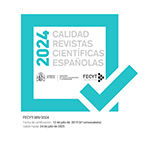A Temporal Device: Disasters and the Articulation of (De)acceleration in and beyond 1970 Ancash’s Earthquake
Abstract
Historically, disaster studies have been confronted with two antagonistic, but not exclusive, conceptualizations of catastrophes: first and foremost, extreme singularities that produce history, but also processes that perpetuate sociopolitical structures and inequalities. By exploring how the 1970 earthquake in Ancash, Peru was the scenario for implementing discourses of acceleration and deceleration amid strong transformations in Peruvian society, this article presents an alternative understanding of disasters beyond disruption and continuity by focusing on the temporal articulations they induce. When conceived as temporal devices, disasters have the capacity of restructuring rhythms, scales, and temporalities heterogeneously and manifoldly. This paper aims to bring forward arguments that, although grounded in the 1970 Ancash earthquake, can be applied to other discussions of disasters, catastrophes, and crises as triggering scenarios of economic, social, or cultural acceleration and deceleration.
Downloads
Article download
License
In order to support the global exchange of knowledge, the journal Res Publica. Revista de Historia de las Ideas Políticas is allowing unrestricted access to its content as from its publication in this electronic edition, and as such it is an open-access journal. The originals published in this journal are the property of the Complutense University of Madrid and any reproduction thereof in full or in part must cite the source. All content is distributed under a Creative Commons Attribution 4.0 use and distribution licence (CC BY 4.0). This circumstance must be expressly stated in these terms where necessary. You can view the summary and the complete legal text of the licence.









